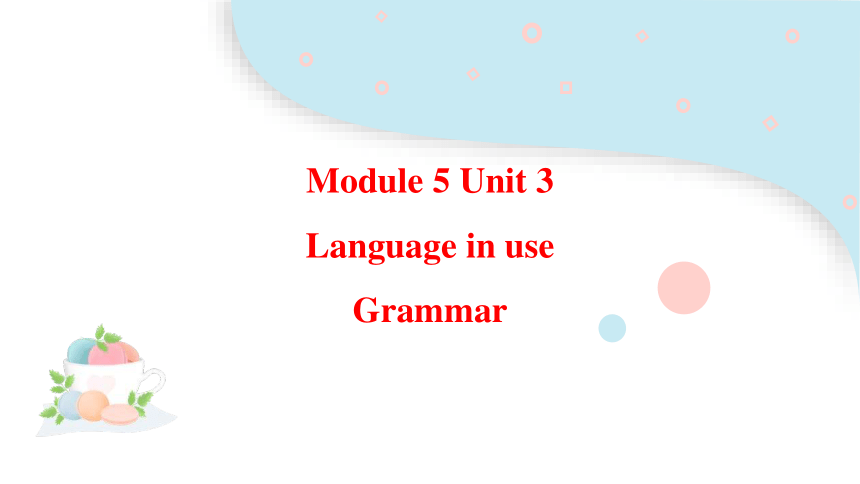
Module 5 Unit 3 Language in use Grammar Let's watch a video first. 1 2 能正确区分一般现在时、一般过去时和现在完成时。 能综合运用一般现在时、一般过去时和现在完成时。 目标一:正确区分一般现在时、一般过去时和现在完成时 Activity 1 Read the following sentences first and put them into Chinese, then talk about them in groups. 1. He has been popular for over eighty years. 2. Tintin appeared in China in the 1980s. 3. Snoopy lives in his own private world. Group Discussion 小组合作观察每个句子,讨论、总结并分组展示。 Task 1: 观察时间状语与对应的谓语结构,总结每个句子 所表达行为或状态的时态; Task 2: 探究总结每个句中所含时态的含义与用法。 1. He has been popular for over eighty years. 2. Tintin appeared in China in the 1980s. 3. Snoopy lives in his own private world. Activity 2 每个小组派代表总结发言。 1 组 2 组 3 组 4 组 Activity 3 Summary 时态(tense)是一种动词形式,不同的时态用以表示不同的时间与方式。它是表示行为、动作、状态在各种时间条件下的动词形式,在英语中有16种时态。 1. He has been popular for over eighty years. 2. Tintin appeared in China in the 1980s. 3. Snoopy lives in his own private world. 现在完成时 一般过去时 一般现在时 1.一般现在时 含义及用法: 1.表示经常性、习惯性的动作或经常存在的状态; 2.表述客观真理、客观存在及自然现象; 3.用于时间和条件状语从句中,代替一般将来时; 4.start, leave, go, come等的一般现在时可表示按规定要发生的 未来动作 【拓展】标志词(组):always, usually, on Sundays, often, sometimes, at times, every day/month...等 巧记一般现在时: 一般现在时, 经常做某事,标志词,有四个:every,every每一个;always, always总是做;usually,usually通常做; often, often 经常做。记住它们没有错,没有错! 动词构成: 主语+情态动词/be动词/do (主语为第三人称单数时, 谓语动词也要变为相应的第三人称单数形式) e.g. I’ll call you when he comes. 当他来的时候我会给你打电话的。 否定构成:don’t /doesn’t + 动原 一般疑问构成及简答: Do / Does + 主语 + 动原 + 其它? Yes, 主语 + do / does. / No, 主语 + don’t / doesn’t. 特殊疑问举例: What do you often do on Sundays? Who likes sports in your family? 2.一般过去时 含义: 1.表示过去某段时间发生的动作或存在的状态; 2.表示过去经常性或习惯性发生的动作或存在的状态。 构成:主语+did/was/were+... 时间状语:yesterday(morning/afternoon /evening), the day before yesterday,just now, last+名词,名词+ago,in 1990等 巧记一般过去时: 一般过去时, 过去做某事, 标志词, 有三个: last, last上一个; ago, ago在以前;yesterday,yesterday在昨天。 问我应该怎么办?动词要用过去式。 动词构成:动词过去时(-ed) 否定构成:didn’t + 动原 一般疑问构成: Did + 主语 + 动原 + 其它 Yes, 主语+ did. / No, 主语 + didn’t. 特殊疑问句举例:What did he do yesterday? When did he get up this morning? 【备注】 He has opened the door. (表示过去“开门”的动作对现在的影响是门还开着) He opened the door. (不能确定门现在是否开着) 3.现在完成时 用法 1.表示过去发生或已经完成的动作对现在造成的 影响或结果; 2.表示从过去某时刻开始延续至今的动作或状态, 只能用某些延续性动词。 构成方式 主语+have/has done sth. 标志词(组) already, yet, ever, never, so far, in the last/past ... ...
~~ 您好,已阅读到文档的结尾了 ~~

